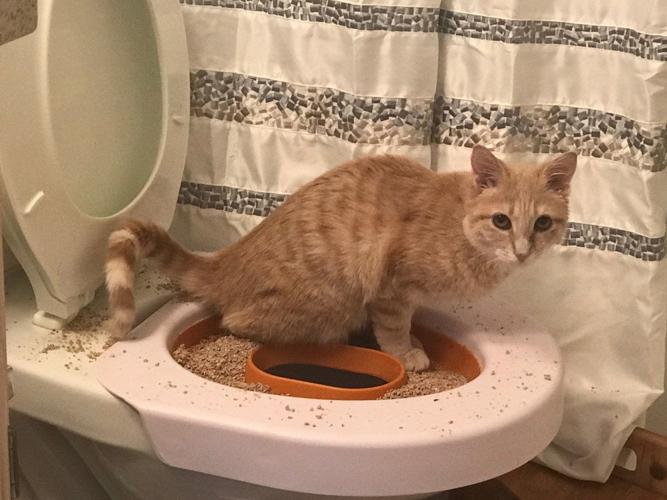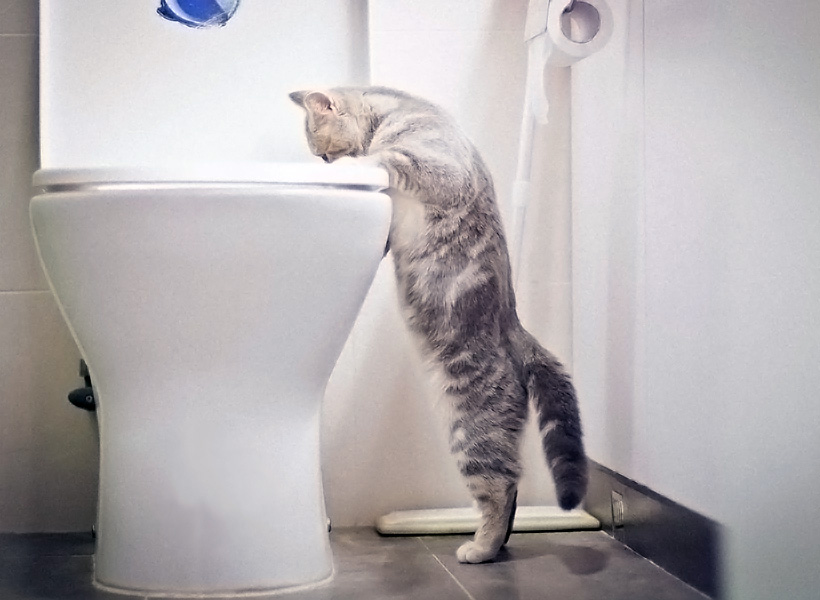Prevent Clogs and Damage: Don't Flush Cat Poop Down Your Toilet - Expert Recommendations
Prevent Clogs and Damage: Don't Flush Cat Poop Down Your Toilet - Expert Recommendations
Blog Article
The content in the next paragraphs pertaining to How to Dispose of Cat Poop and Litter Without Plastic Bags is absolutely remarkable. You should investigate for yourself.

Intro
As feline proprietors, it's necessary to be mindful of exactly how we dispose of our feline pals' waste. While it might appear practical to flush cat poop down the toilet, this technique can have detrimental repercussions for both the environment and human wellness.
Ecological Impact
Flushing pet cat poop presents dangerous virus and bloodsuckers into the water system, posing a significant threat to water environments. These contaminants can adversely influence aquatic life and concession water high quality.
Wellness Risks
Along with environmental worries, purging feline waste can likewise position wellness threats to human beings. Feline feces might have Toxoplasma gondii, a parasite that can cause toxoplasmosis-- a possibly serious disease, especially for expecting females and people with weakened immune systems.
Alternatives to Flushing
The good news is, there are more secure and extra liable means to throw away pet cat poop. Take into consideration the following options:
1. Scoop and Dispose in Trash
One of the most usual approach of getting rid of cat poop is to scoop it into an eco-friendly bag and throw it in the trash. Make sure to use a dedicated trash inside story and throw away the waste promptly.
2. Use Biodegradable Litter
Select naturally degradable pet cat litter made from materials such as corn or wheat. These clutters are environmentally friendly and can be securely taken care of in the trash.
3. Hide in the Yard
If you have a lawn, consider burying feline waste in a marked area away from vegetable gardens and water sources. Make sure to dig deep sufficient to prevent contamination of groundwater.
4. Set Up a Pet Waste Disposal System
Purchase an animal waste disposal system specifically made for feline waste. These systems utilize enzymes to break down the waste, decreasing smell and ecological influence.
Verdict
Liable family pet possession expands past offering food and shelter-- it likewise includes proper waste administration. By avoiding flushing cat poop down the bathroom and opting for alternative disposal methods, we can reduce our ecological footprint and secure human health and wellness.
Why Can’t I Flush Cat Poop?
It Spreads a Parasite
Cats are frequently infected with a parasite called toxoplasma gondii. The parasite causes an infection called toxoplasmosis. It is usually harmless to cats. The parasite only uses cat poop as a host for its eggs. Otherwise, the cat’s immune system usually keeps the infection at low enough levels to maintain its own health. But it does not stop the develop of eggs. These eggs are tiny and surprisingly tough. They may survive for a year before they begin to grow. But that’s the problem.
Our wastewater system is not designed to deal with toxoplasmosis eggs. Instead, most eggs will flush from your toilet into sewers and wastewater management plants. After the sewage is treated for many other harmful things in it, it is typically released into local rivers, lakes, or oceans. Here, the toxoplasmosis eggs can find new hosts, including starfish, crabs, otters, and many other wildlife. For many, this is a significant risk to their health. Toxoplasmosis can also end up infecting water sources that are important for agriculture, which means our deer, pigs, and sheep can get infected too.
Is There Risk to Humans?
There can be a risk to human life from flushing cat poop down the toilet. If you do so, the parasites from your cat’s poop can end up in shellfish, game animals, or livestock. If this meat is then served raw or undercooked, the people who eat it can get sick.
In fact, according to the CDC, 40 million people in the United States are infected with toxoplasma gondii. They get it from exposure to infected seafood, or from some kind of cat poop contamination, like drinking from a stream that is contaminated or touching anything that has come into contact with cat poop. That includes just cleaning a cat litter box.
Most people who get infected with these parasites will not develop any symptoms. However, for pregnant women or for those with compromised immune systems, the parasite can cause severe health problems.
How to Handle Cat Poop
The best way to handle cat poop is actually to clean the box more often. The eggs that the parasite sheds will not become active until one to five days after the cat poops. That means that if you clean daily, you’re much less likely to come into direct contact with infectious eggs.
That said, always dispose of cat poop in the garbage and not down the toilet. Wash your hands before and after you clean the litter box, and bring the bag of poop right outside to your garbage bins.
https://trenchlesssolutionsusa.com/why-cant-i-flush-cat-poop/

As an avid person who reads about Can You Flush Cat Poo or Litter Down the Toilet?, I thought sharing that article was a smart idea. Sharing is caring. You won't know, you may very well be helping someone out. Thanks so much for going through it.
Prices & Booking Report this page